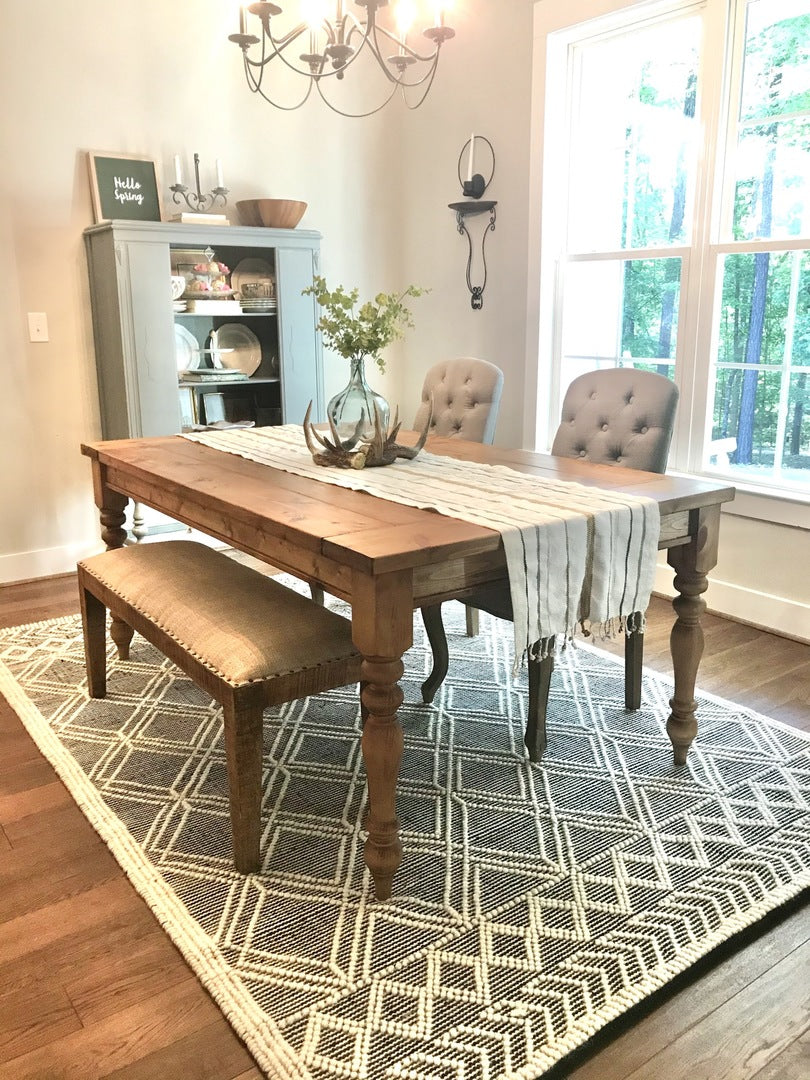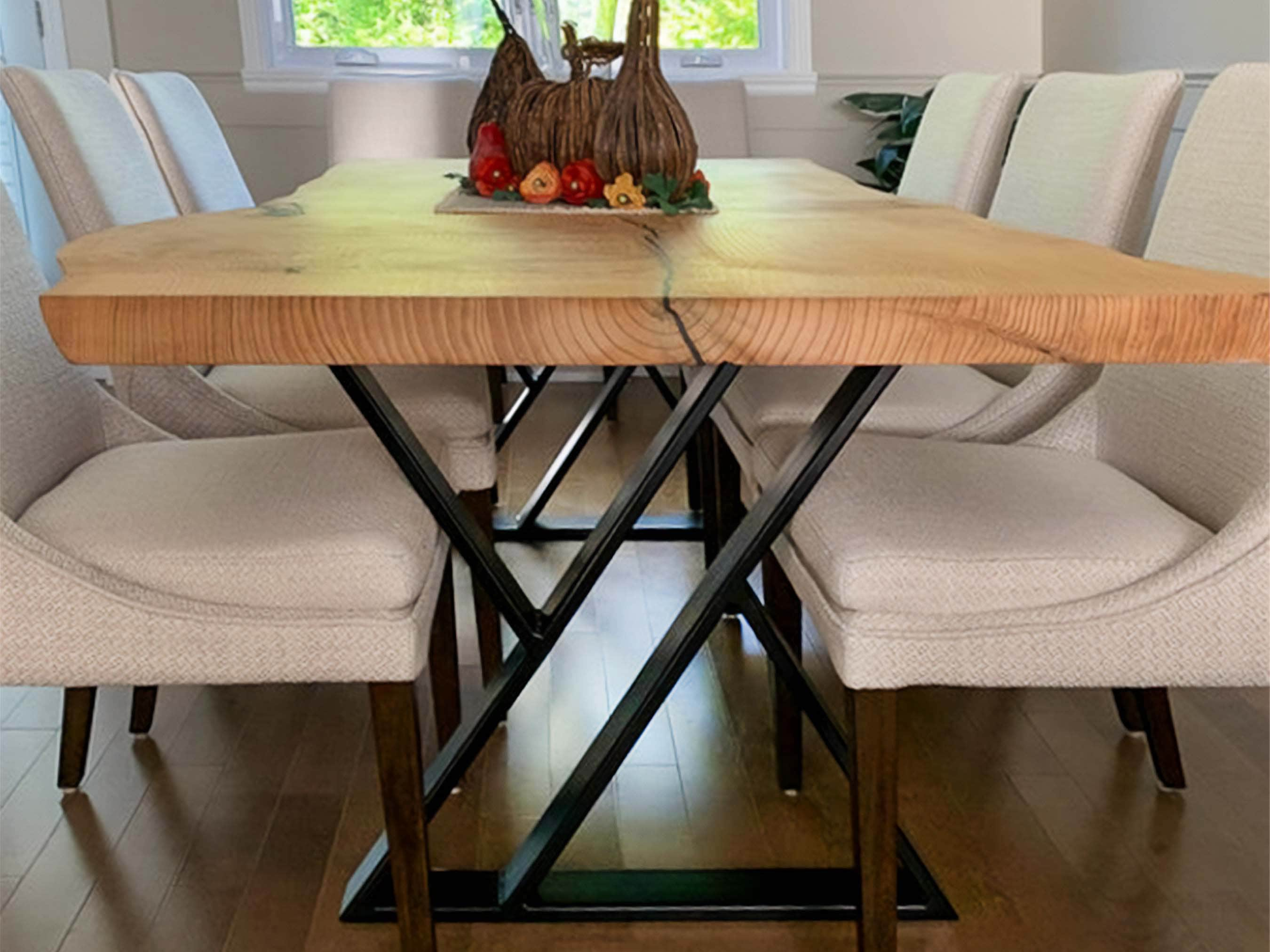The Ultimate Guide to Selecting Durable Dining Room Table Legs
The Ultimate Guide to Selecting Durable Dining Room Table Legs
Blog Article
A Thorough Check Out Table Leg Styles: Discovering the Ideal Suit
Selecting the ideal dining table leg style is essential for both aesthetic charm and useful functionality. For those with bigger tables, trestle legs make certain durable support, whereas barrette legs introduce a mid-century modern-day vibe with their minimalist layout. The x-shaped legs blend modern design with enhanced security.
Traditional 4 Legs
Amongst the numerous types of dining table leg styles, the standard four-leg layout continues to be a timeless option for lots of families. This timeless arrangement offers an unified mix of performance and visual appeals, making it a perennial favorite. Four legs offer balanced support, guaranteeing the table stays steady and efficient in birthing considerable weight. This is especially helpful for families that often hold big events or utilize their table for multiple purposes, such as job or crafting.
From a visual point of view, the conventional four-leg design can be conveniently adjusted to various interior designs. Whether crafted from wood, steel, or a mix of materials, these legs can be intricately sculpted, smooth and minimalistic, or anything in between. Their flexibility permits them to match both rustic and contemporary setups effortlessly.
In addition, the straightforward framework of the four-leg design helps with ease of activity and positioning within an area. Unlike even more facility bases, this style minimizes obstructions, giving enough legroom for restaurants. In summary, the typical four-leg dining table leg design marries sustaining sophistication with useful capability, making it an astute selection for those seeking both kind and function in their eating furniture.
Stand Base
Often celebrated for its sophisticated and space-efficient layout, the stand base is a distinguished option to the standard four-leg arrangement in eating table leg designs. Without corner legs, diners are afforded higher flexibility of motion, making it an excellent choice for round and oval tables that promote more intimate and inclusive gatherings.
The main column itself provides a canvas for intricate styles and imaginative expressions, including an element of aesthetic rate of interest below the table. In recap, the pedestal base combines performance with style, making it an improved and functional option for varied dining settings.
Trestle Legs
Trestle legs offer a durable and ageless foundation for eating tables, characterized by their straight cross-bracing and sturdy assistance beams. Stemming from medieval times, this style has progressed yet kept its essential framework, making it a seasonal favorite in both typical and contemporary setups. The central trestle beam of light, frequently sustained by two or more upright posts, uses remarkable security, allowing for larger table sizes without the need for extra legs.
A substantial advantage of trestle leg tables is the adequate legroom they offer. Unlike tables with four edge legs, the lack of obstructions at the table's edges supplies unblocked space for chairs and restaurants, boosting comfort and ease of access. This makes trestle tables excellent for accommodating larger celebrations, whether in a dining-room or a reception hall.
The aesthetic convenience of helpful hints trestle legs is significant. Readily available in a variety of materials such as wood, steel, and composite, they can be finished to match a large range of interior styles. From rustic farmhouse to sleek contemporary styles, trestle legs can be tailored to match specific tastes. Their enduring appeal and useful have a peek here advantages make trestle legs an engaging selection for those seeking both style and practicality in their table.
Hairpin Legs

The appeal of hairpin legs exists in their simpleness and versatility - dining room table legs. Offered in a series of materials, including steel and brass, they can be completed in countless colors to match various indoor designs. Whether coupled with a rustic wooden table top or a modern glass surface area, hairpin legs effortlessly blend performance with a touch of classic beauty
Sturdiness is an additional remarkable feature of hairpin legs. In spite of their delicate look, these legs are crafted to birth significant weight, ensuring the dining table remains secure and secure. Additionally, they are fairly very easy to mount, making them a popular choice for do it yourself lovers and specialist furnishings manufacturers alike.
X-Shaped Legs

Constructed from materials such as steel, wood, or a combination of both, X-shaped legs can be tailored to match different layout choices. Steel legs often lend a smooth and commercial feeling, perfect for loft-style homes and modern-day dining spaces.
Furthermore, the engineering behind X-shaped legs guarantees even weight site distribution, lessening the danger of tottering and improving longevity. This makes them specifically well-suited for bigger table that need added support. Basically, X-shaped legs blend functional design with modern-day visual appeals, making them an ageless selection for varied dining environments.
Conclusion
A comprehensive understanding of dining table leg designs discloses the distinctive attributes and advantages of each style. Typical 4 legs provide security and classic appeal, while stand bases offer legroom and a streamlined appearance. Trestle legs make sure durable support for larger tables, and barrette legs introduce a mid-century contemporary aesthetic. X-shaped legs combine modern layout with improved stability. Picking the ideal leg design guarantees both functional and visual fulfillment in any type of dining room.
Report this page